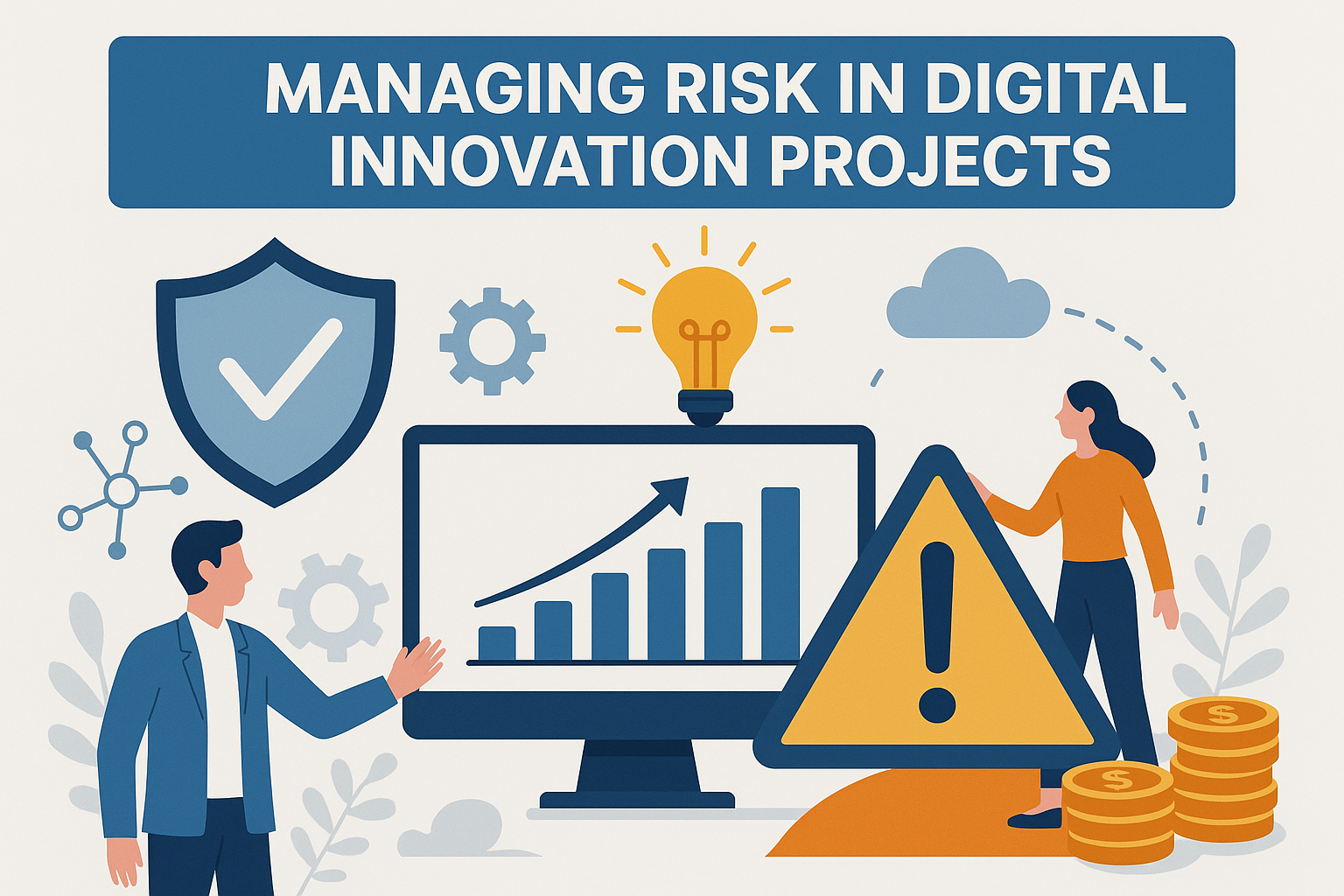Innovation thrives on bold ideas—but boldness must be balanced with risk intelligence.
Why Risk Management Is Integral to Innovation
Digital innovation often disrupts existing business models, introduces new technologies, and experiments with uncertain markets. These factors introduce strategic, operational, technical, and compliance risks. Effective innovation doesn’t mean avoiding risk—it means managing it with intention.
Key Risk Management Is Integral to Innovation
1. Technology Risk
System failures, unproven platforms, integration challenges
Legacy tech incompatibility with modern solutions
2. Cybersecurity & Data Risk
Data breaches, privacy violations, regulatory non-compliance
Weaknesses from rapid adoption of cloud, AI, IoT
3. Operational Risk
Disruption to core services during implementation
Over-dependence on specific tools or vendors
4. Strategic Risk
Misalignment between innovation initiatives and business goals
Market timing errors or misjudged customer needs
5. Cultural & Change Risk
Employee resistance to change
Poor change management leading to low adoption
Strategies for Risk-Smart Innovation
Embed Risk Assessment Early: Conduct risk impact analyses at the ideation stage, not post-launch.
Establish Guardrails, Not Roadblocks: Allow room for experimentation within clear safety boundaries.
Build Cross-Functional Risk Teams: Combine tech, compliance, legal, and business perspectives.
Use Agile and MVP Approaches: Release iteratively to test in controlled environments.
Cybersecurity by Design: Integrate privacy and security from the architecture phase.
Enablers of Proactive Risk Management
Digital Risk Dashboards: Provide real-time visibility into active risks across innovation
AI for Threat Detection: Use machine learning to flag unusual patterns
Scenario Planning: Run simulations for worst-case outcomes and create mitigation
Innovation KPIs + Risk KPIs: Balance speed with sustainability using dual performance tracking.
Conclusion
Innovation and risk are not opposites—they are co-pilots. Sustainable digital innovation requires more than creativity; it demands structured foresight. Organizations that master risk don’t slow innovation—they scale it with confidence.





